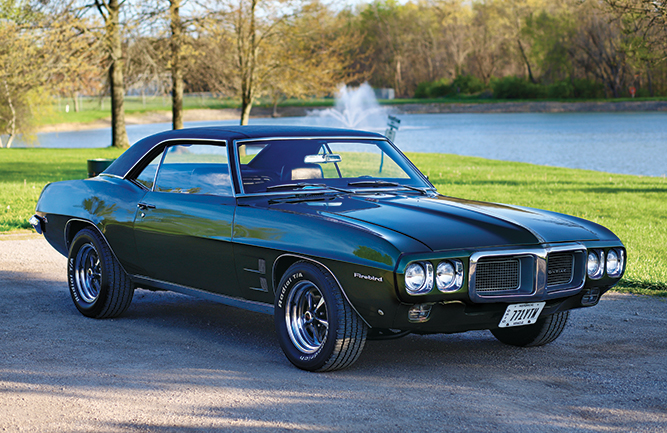Turf MD: Expensive is what lies underneath

Karl Danneberger
Owning and watching classic cars from the 1960s is a summertime passion. It is, outside of playing golf, my favorite diversion from the workday grind. Since I lean toward the muscle cars of that era, to see a 1964 Pontiac GTO, 1968 Dodge Charger R/T, 1969 Chevrolet Camaro ZL 1 or a 1970 Chevrolet Chevelle SS stopped at a stoplight is an immediate reason to grab my phone and take a picture.
Many of these cars and others like them, including my 1969 Pontiac Firebird (pictured), have undergone extensive renovation/restoration. Fifty-year-old cars are old and need to be refurbished often more than once to make it another 50 years.
Although, for those like me at the stoplight, what a car looks like from 25 feet away is much different than close up. Everyone notices the new paint job, the rims and tires, the interior and the sound from the headers and muffler system. It is the things that are not seen underneath the car that impact the drivability, stability and safety of the car. It is the installation of a new gas tank, new rear frame rails, power steering box, the QA-1 Pro coil front coil-over system with front control arms and the hundreds of other things that really make that car able to cruise down the street. All of that, however, costs money, actually, a lot of money for work that goes unseen. Yet, the expenses associated with and around the chassis are the foundation on which the car is built and what the future of that car is based on.

Pontiac Firebird. (Photo courtesy of Karl Danneberger)
Golf course renovation/restoration is much like restoring a classic car. Golf course renovation occurs across the spectrum, but many are old classical courses in need of refurbishing.
Given the evolution of the game of golf, from the golfer perspective to new technologies, golf courses need to be refreshed or updated. Most club members and golfers, when it comes to course renovation, are most interested in visual changes — the flow of the greens and associated greens complex, the bunkers, the location of new tees and what type of turfgrass will be used — much like what a classic car looks like 25 feet away.
Very few golfers care about the drainage system, green construction, cart paths or irrigation system that may be nonfunctional or dated. The less visible aspects of golf course renovation are very expensive and, for the most part, not visible to the golfer. It is part of golf course restoration that is often difficult to justify or a place where cost cutting is attempted.
The advances in drainage, green construction and irrigation systems over the last 20, 30, 50 or 100 years are what you would expect in any advancing field. There is really no comparison to what was available in the past to what we have now. Advances in drainage system technology provide improvements for both surface and subsurface water interception and movement. A well-drained course provides healthier turf during both winter and summer stress periods. From a golfing business perspective, a well-drained golf course reduces the number of closures or restrictions to golfing due to wet conditions.
For something in the ground, a new irrigation system only excites the golf course superintendent. With increased emphasis on best management practices and the importance of water management to the future of golf, investment in advanced irrigation systems is an investment in the future.
I know little about cart path replacement, but given the times riding around on them around the world, I have gained an appreciation for what is safe. Hardly an exciting topic, but degrading or obsolete cart path designs are increasingly becoming a safety issue for clubs, which can be reflected in insurance coverage.
The key to golf course restoration is similar to restoring a classic car. A well-thought-out master plan prior to starting construction is the key. I know from car restoration, planning that encompasses the entire car will reduce both frustrations and wasted money. With renovations, a master plan presents the future vision for the golf course that meets both the goals and costs of the restoration.











